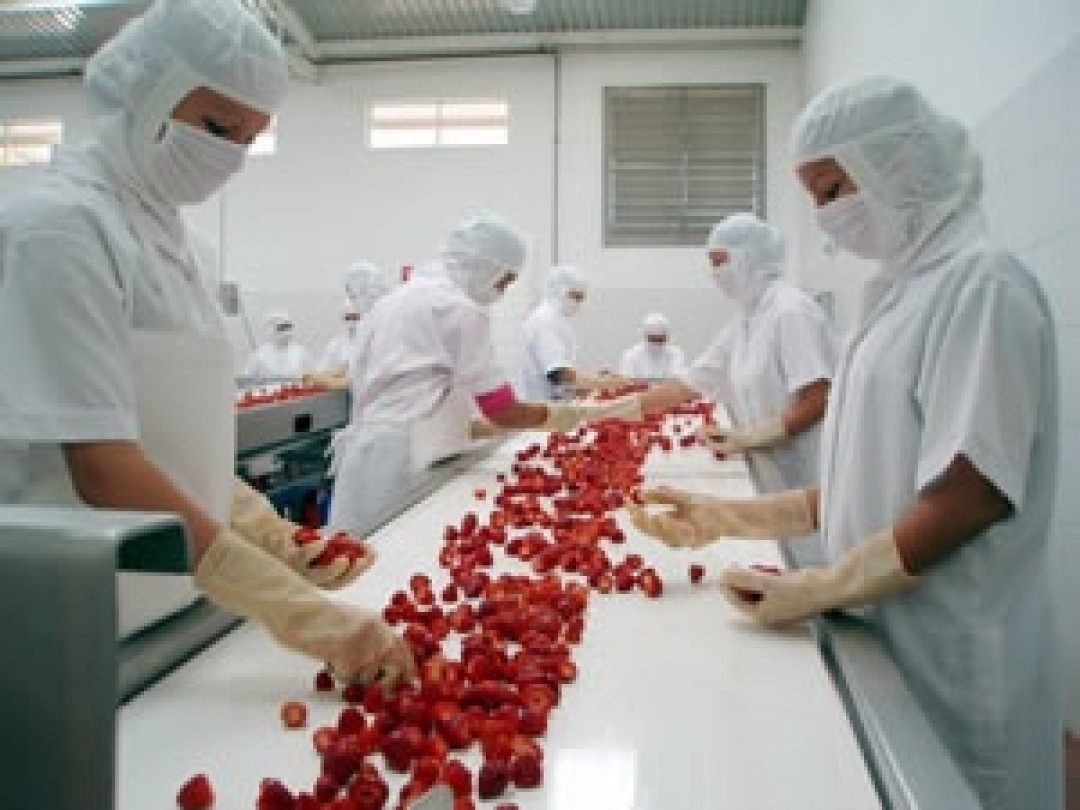
COLD STORE FREEZING VS. IQF FREEZING
The frozen food market is one of the largest and most dynamic sectors in the food industry. Despite considerable competition from other sectors, the frozen foods market is expected to continuously grow in the next decade. Freezing is one of the oldest and most frequently used methods of preserving food, which keeps the taste, texture and nutritional value in foods better than any other method.
The frozen food industry is highly based on science and technology, therefore proper equipment suitable for continuous processing of the products is highly valuable in freezing preservation methods. Development in freezing technology has mostly been characterized by the improvements in mechanical handling and process control in order to increase the freezing rate and to reduce costs. Freezing processes imply mainly thermodynamic and kinetic factors and the freezing point is considered to be the temperature at which the first ice crystal appears and the moment the liquid temperature is in equilibrium with the solid. However, when freezing food products, the process becomes more complex. Freezing time is one of the most important parameters in the freezing process, defined as the time required to lower product temperature from its initial temperature to a given temperature at its thermal core and also has a huge impact on the quality of the product.
Cold Store freezing and IQF freezing are two completely different freezing methods with different visible results to the final product. From a practical point of view, Cold Store freezing is used for big volumes of big products, like whole chicken, packed meat and other protected products and IQF freezing is used for small products, like berries, fruit cubes, vegetables, shrimps, mussels, cheese and pasta. From the technical point of view, Cold Store freezing implies placing the product on trays, inside a cold storage and waiting until the product is completely frozen. It takes a long time until the product is gradually frozen to the centre. IQF technology implies placing the product inside a freezer that makes better use of thermodynamics by continuously moving the product. The product is placed on a fluidized bed that transports and moves the product while an efficient air flow is blown through fans. IQF freezes the product faster to the core. The major difference between Cold Store freezing and IQF is the freezing time required. Cold store freezing has a slow freezing time, thus the expansion of water during freezing leads to the formation of bigger ice crystals. Big ice crystals stress the membrane and the delicate structure of the product. In comparison to that, IQF freezing technology has a quick freezing time and the expansion of ice crystals is limited, thus the membrane and structure of the product is not destroyed. By limiting the freezing time, taste, texture and nutritional value is better preserved in food. Products frozen in cold storage show considerable drip loss and affected texture when thawed and may result in drip, soggy texture of the product as well as loss of nutrients.
Other differences between Cold Storage and IQF freezing can be seen in the colour of the product, shape and surface damage. Products frozen at a slow rate normally look more colourful than quick frozen products. After thawing however, the natural appearance is often lost and the colour turns grey. The signs of quality freezing with IQF technology is a rather pale and white coloured product when frozen that turns to have a natural look when thawed. Also, separation of the product is significantly better with IQF freezing method. Depending on shape, size and stickiness the product is more or less difficult to separate if frozen in a Cold Store, additionally lumps and blocks cause yield losses. By freezing on a fluidized bed the shape remains natural. There is typically no deformation of product when the products are individually quick-frozen and with modern efficient IQF freezing it is possible to avoid surface damages.
Cold Store freezing normally requires considerable manpower resources to handle the boxes or the trays. If the product is frozen partly in blocks, mechanical separation is required. This kind of treatment often destroys the appearance and creates fines on the product. Also cleaning, handling and repairing of trays is time and manpower consuming. With good procedures, an IQF line only requires supervision and very little intervention - a job that is normally done by the packing crews, in the case of cold store freezing. With efficient IQF freezing technology, it is in some cases possible to add surface water to the product before freezing, also called glazing, which creates a thin transparent film that protects the product during storing, avoiding dehydration of the product and therefore increasing profits.
One of the most important aspects of freezing with IQF technology is food safety. With a modern in-line process and an IQF freezer, it is possible to achieve up to zero contact between the product and the workers in comparison with Cold Store where due to extensive manual handling and exposure there is a considerable risk for contamination when freezing products.
Moving from Cold Store to IQF seems a clear and sustainable solution for the future. One of the main reasons for this is the change in consumer’s preferences in the advantage of higher quality frozen products. This in addition to the obvious advantages in transporting, storing and handling of small, cut, sliced or diced IQF products compared to big, packed products in cold stores, will further determine the shift from the old methods such as cold store freezing to new innovative solutions like IQF technologies.
